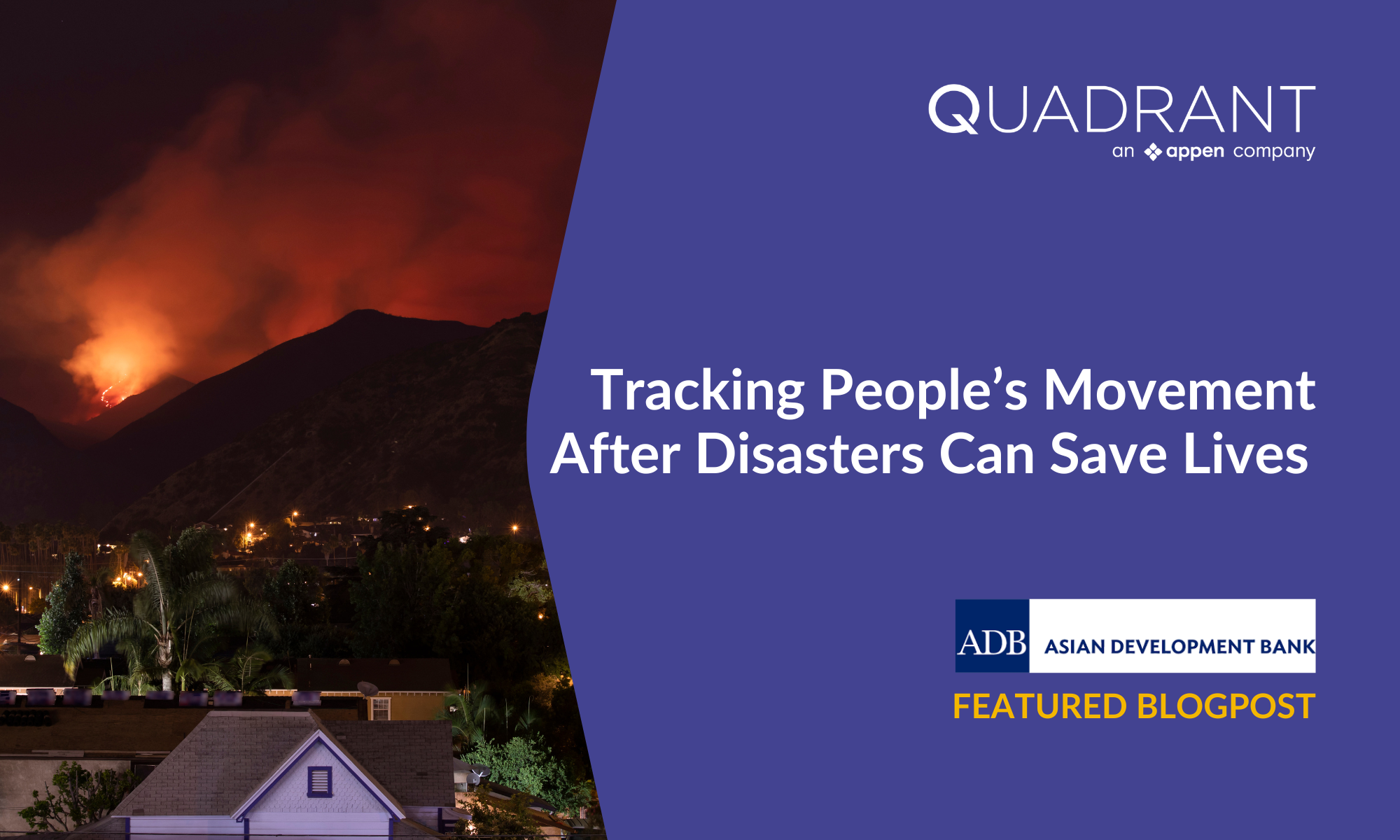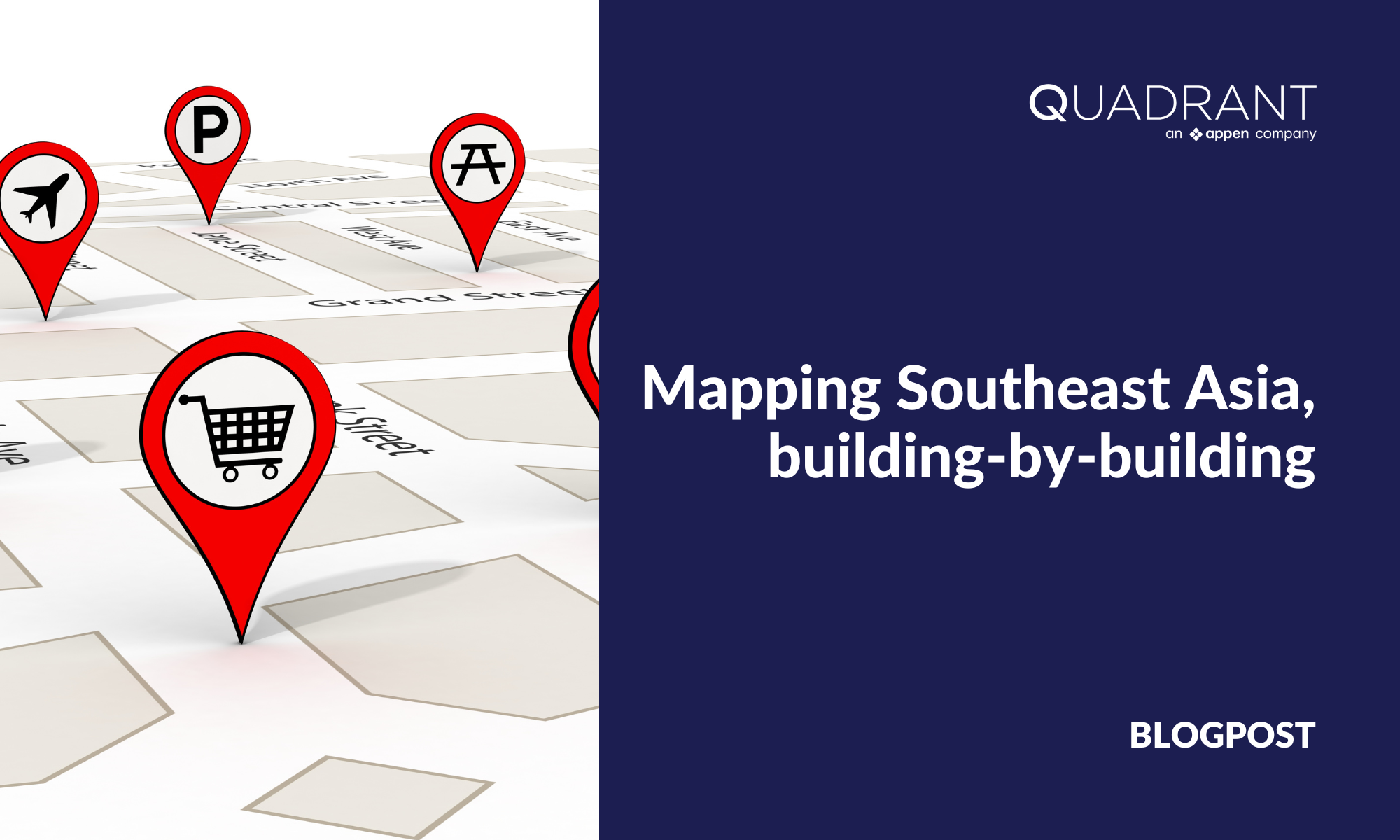In the aftermath of a disaster, access to relevant, high quality and timely information can greatly enhance the speed of emergency response by agencies and the effectiveness of government policies. The rise of signals and sensing capabilities, such as through privacy-compliant cell phone and GPS data can provide rich and rapid information about human location, activity and mobility. In a disaster recovery context, analytics based on mobility data can underpin socio-economic impact analysis.

The activity heat map displays normalized activity profile of Ambon Island for an average 24-hr day in Sept. 2019. Data are aggregated into hexagons, which are colored based on the count of unique devices by hour in each cell. This method highlights the most and least used locations at any moment in time. In the map above, yellow cells represent areas of high activity, or locations with the greatest number of people over the averaged 24-hr period. Source: Derived from Quadrant’s mobile location data.
Aggregated and anonymous mobility data provides insights on hotspots and movement patterns at a particular time. When combined with information on infrastructure such as major hospitals, airports, universities, shipping ports and commercial centers, we get a detailed picture of areas of significant activity.
Take the example of a 6.5 magnitude earthquake that struck Maluku Island, Indonesia, on 26 September 2019, with the epicenter located about 40 kilometers northeast of the capital city Ambon. In addition to deaths and injuries, reports suggest that over 170,000 people were displaced and that there was extensive damage to public facilities, houses and other infra.
By tracking activity over time, we can understand how people use an area during and after a disaster, compared to a pre-disaster baseline. Mobility data showed a significant drop in human activity within a 10 km radius from the epicenter on the day of the earthquake and a low activity profile in the following days.
Whereas activity profile within the 50 km radius appeared to increase on the day of the earthquake and the subsequent days. This can provide information on displacement, relocation, services disruption, and relief measures needed.
Mobile location data can help determine where are the people who need to be helped?The visuals below show a decrease in human activity within a 10 km radius from the epicenter on the day of the Maluku Island earthquake, while activity within the 50 km radius increased.


Within 30-40 km from the epicenter, activity in commercial centers and ports in Ambon Island were disrupted, with an activity index falling by 7 percentage points four days after the earthquake compared to the yearly avg. The decline conveys significant economic losses.
On the other hand, activity in airport and industrial areas increased after the event. We could conjecture that industry operations increased to support relief provision. Thus, this kind of information when combined with other indicators over time can be linked to socio-economic conditions, and recovery and resilience patterns in a region.

There is a need for evidence-based support in countries and regions experiencing increasing impacts from disasters. Mobility analysis using GPS datasets enables a greater understanding of the movement and distribution of people than can be found in other methods such as satellite imagery and surveys, and can complement these other datasets.
For disaster response and initial recovery measures, this information can be invaluable and should be further explored. The information in this blog post is based on the report: Nowcasting and Disasters - Impact-Based Forecasting and Socioeconomic Monitoring.
This post was originally published on the Asian Development Blog by Madhavi Pundit and Priscille Villanueva.



